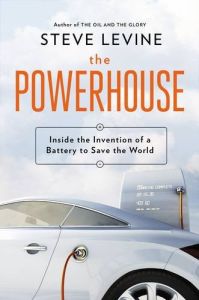Join getAbstract to access the summary!

Join getAbstract to access the summary!
Steve LeVine
The Powerhouse
Inside the Invention of a Battery to Save the World
Viking, 2015
What's inside?
Follow the global hunt for the battery technology that will launch the age of electric vehicles.
Recommendation
In reporter Steve LeVine’s account of the nascent electric-vehicle industry, the perfect battery is as sought after as the pot of gold at the end of the rainbow. The invention of a car battery that provides close to gasoline’s energy performance could spark an economic boom. With such a battery, electric vehicles could – by 2030 – grow into an industry worth hundreds of billions of dollars annually. Scientists, governments and entrepreneurs worldwide are feverishly mixing new alloys, distributing grants and raising venture capital in a race to be the first with a viable battery that can dominate the electric-car market. LeVine follows the day-to-day struggles of researchers at America’s Argonne National Laboratory as they contend with the market, political pressures, espionage and the laws of physics. In economical prose, LeVine offers a fast-paced story with echoes of a political thriller – despite its dizzying hops across continents and an ambiguous chronology. getAbstract recommends this well-researched analysis to marketers, public officials, energy industry insiders and entrepreneurs navigating developing technology.
Summary
About the Author
Steve LeVine covers energy and technology issues for Quartz. He is a Future Tense fellow at the New American Federation and teaches at Georgetown University’s School of Foreign Service.


















Comment on this summary